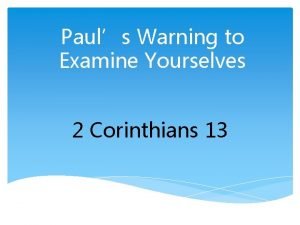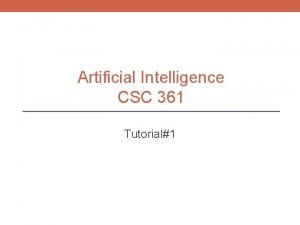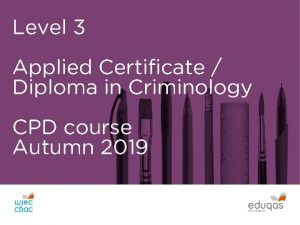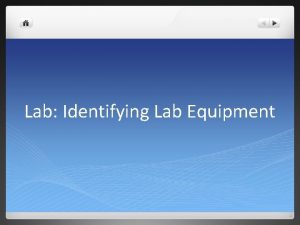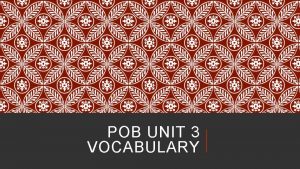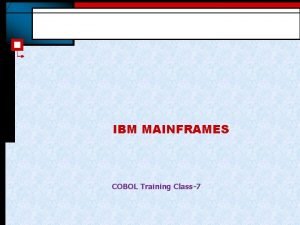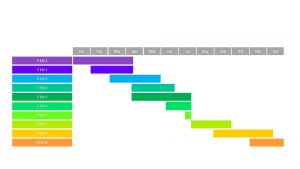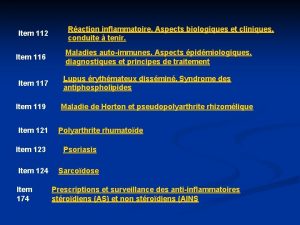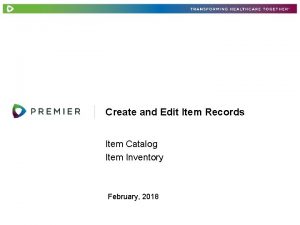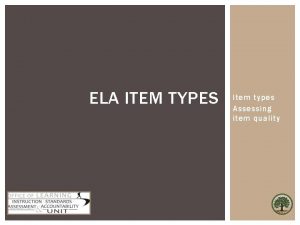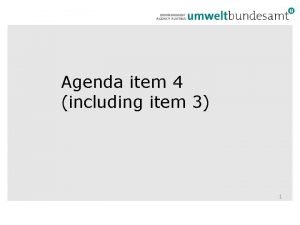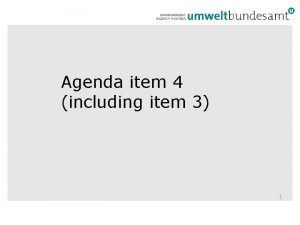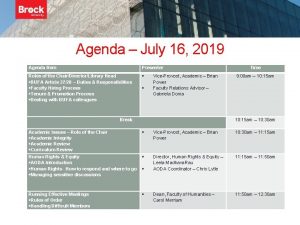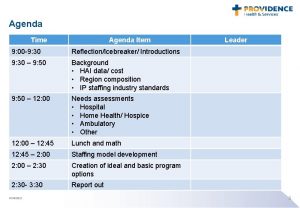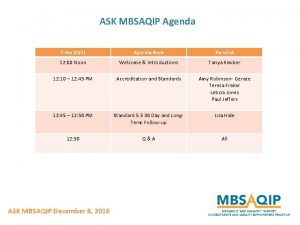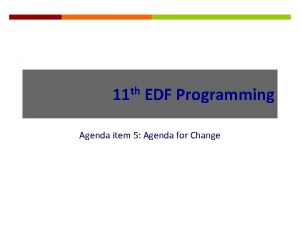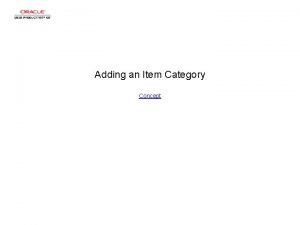Agenda Item 1 2 To examine the results

























- Slides: 25

Agenda Item: 1. 2 To examine the results of ITU‑R studies, in accordance with Resolution 232 (WRC‑ 12), on the use of the frequency band 694 -790 MHz by the mobile, except aeronautical mobile, service in Region 1 and take the appropriate measures

Relevant Resolution • Resolution 232 (WRC-12) - Use of the frequency band 694 -790 MHz by the mobile, except aeronautical mobile, service in Region 1 and related studies

Issues • Issue A: Options for Refinement of the lower edge • Issue B: Technical and regulatory conditions applicable to the mobile service concerning the compatibility between the mobile service (MS) and the broadcasting service (BS). JTG 4567 • Issue C: Technical and regulatory conditions applicable to the mobile service concerning the compatibility between the mobile service (MS) and the aeronautical radionavigation service (ARNS). • Issue D: Solutions for accommodating applications ancillary to broadcasting requirements. WP 5 D • Channeling Arrangements for the mobile service, adapted to the 700 MHz band

Summary of Progress - JTG 4567 • Sharing and compatibility studies (between MS and BS) in the frequency band 694790 MHz ü Contribution 367: Application of Monte Carlo statistical analysis for the assessment of IMT uplink interference into fixed rooftop digital terrestrial television receivers ü Contribution 557: Modelling of potential interference from IMT uplink to fixed rooftop digital terrestrial receivers Completed • Options for the lower band edge ü Contribution 68: Proposals for lower band edge ü Contribution 221: Proposals for lower band edge for the band being studied under WRC-15 agenda item 1. 2, taking into account results of work done by ATU Member States towards modification of the GE 06 Plan • Study on developing solutions for SAB/SAP • Drafting of CPM Text (Focusing on finalization of all sections except executive summary) ü Contribution 558: Proposed modifications to working document towards preliminary draft CPM text for WRC-15 agenda item 1. 2 Ø Consideration of possible contribution to the final JTG 4567 meeting Pending • Finalize the results of sharing and compatibility studies in the frequency band 694790 MHz

Summary of Progress – WP 5 D • Studies on channelling arrangements for IMT adapted to the frequency band below 790 MHz down to around 694 MHz for Region 1 ü Contribution 274: Principles for assessing the suitability of proposed channelling arrangements ü Contribution 423: Reducing the number of proposed channelling options for the 700 MHz frequency band in Region 1 ü Contribution 515: Reducing the number of proposed channelling options for the 700 MHz frequency band in Region 1 Ø Consideration of possible contribution to the 19 th Meeting of WP 5 D to reaffirm our preference regarding the 700 MHz channeling arrangement. Pending • Liaise the results of studies to JTG 4567

Methods to satisfy Agenda Item 1. 2 – Issue A: Option for refinement of the Lower Edge Method A • Modification of RR Article 5 to insert the allocation to the mobile, except aeronautical mobile, service in the frequency band 694 -790 MHz in Region 1 on a primary basis, technical and regulatory conditions apply as in one of the methods for Issue B and in the Method(s) of Issue C, as decided by WRC-15, based on the results of the studies performed by JTG 4 -5 -6 -7. • Modification of RR No. 5. 317 A to extend the identification of IMT in Region 1 down to 694 MHz.

Preliminary SA Position – Issue A Method A Reasons: • Regional activities toward the modification of the GE-06 Plan have focussed on accommodating DTT BS within the band 470 -694 MHz. • Therefore, it is necessary to protect the BS operating in UHF channel 48 (686694 MHz) and below. • Protection can be achieved by fixing the lower edge of the mobile allocation at 694 MHz and through the adoption of a suitable guard band which extends upwards from 694 MHz. Note, that the technical and regulatory conditions applicable to the MS will be addressed under Issue B. • Caution should be exercised when adopting the guard band as values greater than 9 MHz will prevent harmonisation with 3 GPP Band 28 (APT 700 MHz), which starts at 703 MHz. • The CEPT preliminary position on Issue A is aligned with Method A

Methods to satisfy Agenda Item 1. 2 – Issue B: Technical and regulatory conditions applicable to the mobile service concerning the compatibility between the mobile service (MS) and the broadcasting service (BS). Method B 1 • The GE 06 Agreement applies and no additional regulatory provisions for the protection of the BS are required. • The ITU-R has developed Recommendation(s) which provide a set of technical conditions applicable to mobile service stations and protection to the broadcasting service below 694 MHz based on the results of the studies: • Revision of Recommendation ITU-R M. 1036 -4 so as to include harmonized channelling arrangements for 700 MHz in Region 1. • New ITU-R Recommendation to specify the limit of unwanted emissions of mobile stations in the 700 MHz band.

Methods to satisfy Agenda Item 1. 2 – Issue B Method B 2 • The GE 06 Agreement applies together with additional technical conditions and regulatory mechanisms for the protection of the broadcasting service. • To this effect, a new or a revised WRC-15 Resolution is required which specifies a consistent set of technical conditions and regulatory mechanisms applicable to mobile service stations for protection of the broadcasting service with respect to the cochannel and adjacent channel interference, based on the results of the studies. • For example, this Resolution may include: − OOBE level of mobile stations in the frequency band below 694 MHz. − Guard band above 694 MHz. − A complementary value to the existing GE 06 trigger in order to take into account cumulative interference. − Regulatory mechanism to take into account interference in adjacent band

Methods to satisfy Agenda Item 1. 2 – Issue B Method B 3 • The GE 06 Agreement applies and for the operation of the MS in relation to the protection of the BS, RR No. 9. 21 shall apply. • Affected administrations are identified for application of RR No. 9. 21 using triggering criteria, as contained in Annex 1 of Resolution xxx, resulting from the studies carried out by the JTG 4 -5 -6 -7, through Resolution 232 (Rev. WRC-15). This Annex could be contained in a new or modified Resolution.

Views – Issue B General Comments: • Co-channel interference is not an issue as SA and its neighbouring countries have agreed to use the 470 -694 MHz & 694 -862 MHz frequency ranges for BS and MS, respectively Views on Method B 1 • • Protection of broadcasting from mobile service in cross-border coordination is effectively ensured by the application of the GE 06 Agreement, without any need for additional provision in the RR. The technical conditions applicable to IMT stations (base stations and user equipment) for ensuring the protection of the broadcasting service below 694 MHz should be included in a new ITU-R Recommendation. This recommendation should specify the adequate unwanted emission limit in the band 470 -694 MHz for an IMT terminal in the 700 MHz band. Furthermore, revision of Recommendation ITU-R M. 1036 -4 may be required in order to reflect the harmonized channelling arrangement adopted for 700 MHz. The CEPT preliminary position on Issue B is aligned with Method B 1

Views – Issue B Views on Method B 2 • Protection of broadcasting from mobile service in cross-border coordination is effectively ensured by the application of the GE 06 Agreement, without any need for additional provisions in the RR. Industry views are sought on the merits of Method B 2

Views – Issue B Views on Method B 3 • The RR No. 9. 21 is usually considered in cases where no other agreements are available for the protection of the incumbent service. • However in this scenario, the protection of broadcasting services can be achieved by: – Bilateral and multilateral coordination and agreements – Application of regulatory and technical criteria of GE-06 Agreement. – Method B 2, recommendations/ resolutions for additional regulatory and technical provisions to protect BS might be developed, as appropriate, considering the results of ongoing sharing and compatibility studies. . Therefore, it is recommended that Method B 3 is not supported.

Preliminary SA Position – Issue B Preliminary position will be adopted once industry views on Method B 2 are obtained

Preliminary SA Position Issue C: Technical and regulatory conditions applicable to the mobile service concerning the compatibility between the mobile service (MS) and the aeronautical radionavigation service (ARNS). Neither SA nor its neighbors have an ARNS allocation in the frequency range 470 -862 MHz. As a result, this issue is of no relevance to the country.

Methods to satisfy Agenda Item 1. 2 – Issue D: Solutions for accommodating applications ancillary to broadcasting requirements Method D 1 • The modification to RR No. 5. 296 should include a limitation of this footnote to the band 470 -694 MHz as well as an extension to applications ancillary to programme making in addition to applications ancillary to broadcasting. Method D 2 • This method proposes a modification to RR No. 5. 296 and seeks for identification of frequency bands for SAB/SAP. Suitable methods are still under development

Preliminary SA Position – Issue D • The revision of footnote RR 5. 296 will not have any noticeable impact on SA as the footnote already states that for South Africa the band 470 – 698 MHz has a secondary allocation for SAB/SAP as of WRC-12. • It is proposed that a decision be only taken after the next JTG 4 -5 -6 -7 meeting (21 – 31 July 2014). South Africa withholds its preference regarding Methods pending the further development of same at the next meeting of JTG 4567.

Methods to satisfy Agenda Item 1. 2 – Channeling Arrangements WP 5 D have developed the following options:

Methods to satisfy Agenda Item 1. 2 – Channeling Arrangements

Preliminary SA Position – Channeling Arrangements Criteria for Channeling Arrangement Selection • Lower Band Edge – The lower edge of the 700 MHz allocation should be fixed at 694 MHz as adopted by WRC-12, with the guard band for protecting broadcasting services operating below 694 MHz extending from 694 MHz upwards, • Global Harmonisation – Maximize commonality, to the extent possible, with the existing 700 MHz channelling arrangement (frequency arrangement A 5 in Recommendation ITU-R M. 1036 -4). Global harmonization is important to increase economies of scale and allow for worldwide roaming.

Preliminary SA Position – Channeling Arrangements Criteria for Channeling Arrangement Selection • Optimum utilization of spectrum – Spectrum below 1 GHz is of great importance and value primarily because of its favourable propagation characteristics. – In developing channelling arrangements, there is a need to maximise the total amount of usable spectrum in the band by minimising, to the extent technically and practically possible, the sizes of guard bands and the duplex gap respectively, taking into account the need for global harmonisation

Preliminary SA Position – Channeling Arrangements Based on the criteria for Channeling Arrangement Selection, SA may opt for full harmonisation with A 5 of ITU-R 1036 -4 (2 x 45 MHz APT 700 MHz) and partial harmonisation with A 3 of ITU-R 1036 -4 (2 x 15 MHz Europe 800 MHz). OR SA may opt for partial harmonisation with A 5 of ITU-R 1036 -4 (2 x 30 MHz APT 700 MHz) and full harmonisation with A 3 of ITU-R 1036 -4 (2 x 30 MHz Europe 800 MHz). Note that both options yield a maximum of 2 x 60 MHz of spectrum in the 700/800 MHz bands

Preliminary SA Position – Channeling Arrangements Full harmonisation with A 5 of ITU-R 1036 -4 (APT 700 MHz) and partial harmonisation with A 3 of ITU-R 1036 -4 (Europe 800 MHz) Insert Europe plan

Preliminary SA Position – Channeling Arrangements Partial harmonisation with A 5 of ITU-R 1036 -4 (APT 700 MHz) and full harmonisation with A 3 of ITU-R 1036 -4 (Europe 800 MHz) This arrangement corresponds with option 2. 2 (a)

The Way Forward 19 th Working Party 5 D Meeting, 18 - 25 June 2014 • Possible contribution to further reduce the number of 700 MHz channeling arrangements. Note, that this contribution must consider the latest developments at JTG 4567, CPG PTD and other relevant fora. • Indicate preference for update to ITU-R M 1036 -4 • Deadline for contributions: 1600 hours UTC, 11 June 2014. Final Meeting of Joint Task Group 4 -5 -6 -7, 21 -31 July 2014 • Possible contribution for CPM text under AI 1. 2. • Consider the possible mechanisms for specifying the OOBE limit i. e Recommendation, Resolution, incorporation of resolution by reference, and the implications thereof • CPM text proposal - Consolidating the results of sharing studies
 Metaphor adalah
Metaphor adalah Agenda sistemica y agenda institucional
Agenda sistemica y agenda institucional Helping students examine their reasoning
Helping students examine their reasoning Analyze the picture carefully and tell something about it
Analyze the picture carefully and tell something about it Examine
Examine Look at the sentence below
Look at the sentence below 1 corinthians 13:7-10
1 corinthians 13:7-10 Quotient rule of exponents
Quotient rule of exponents Discuss the rivals as a comedy of manners
Discuss the rivals as a comedy of manners Examine your faith
Examine your faith Depreciation formula algebra
Depreciation formula algebra Umbraco examine search example
Umbraco examine search example Marzano element 18
Marzano element 18 Look at the pictures and answer
Look at the pictures and answer Noun of examine
Noun of examine Let a man examine himself
Let a man examine himself Origin and purpose of community development
Origin and purpose of community development Explain the following lines (104-110)
Explain the following lines (104-110) Let us examine ourselves
Let us examine ourselves Playing a decent game of table tennis (ping-pong)
Playing a decent game of table tennis (ping-pong) Criminology unit 3 controlled assessment
Criminology unit 3 controlled assessment Pointed object used to examine specimens
Pointed object used to examine specimens Example of unethical practices
Example of unethical practices Basic procedure of work study
Basic procedure of work study To examine in detail for a purpose
To examine in detail for a purpose String syntax in cobol
String syntax in cobol






